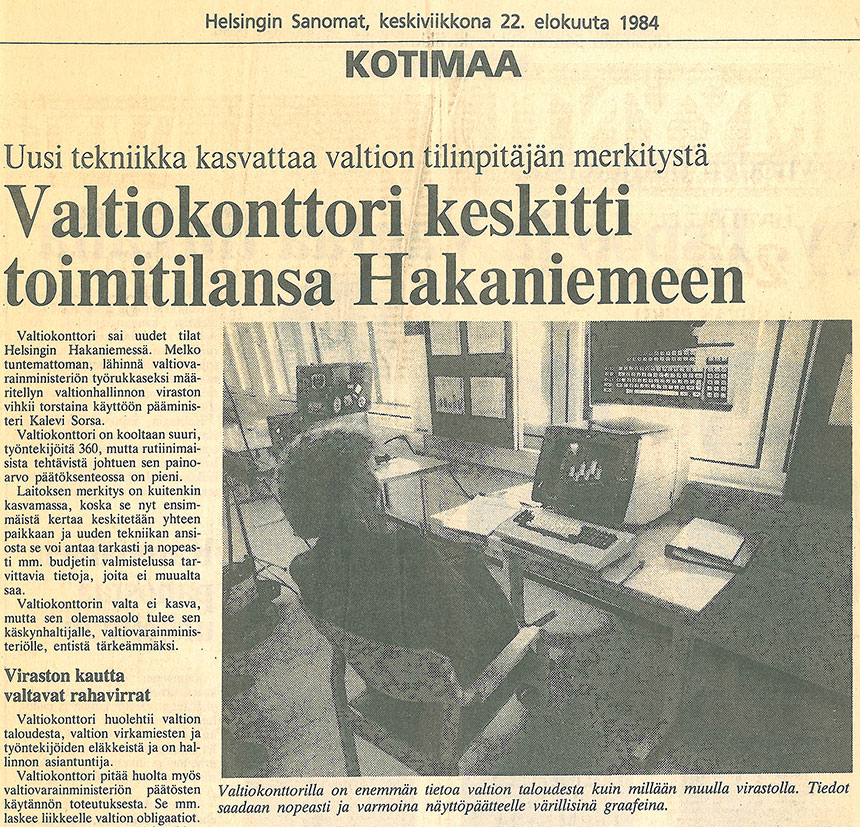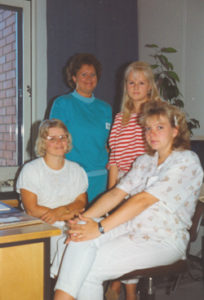
The State Treasury moved into new premises in Hakaniemi in 1984.
1987
In the beginning of March in 1987, the civil department of the State Accident Compensation Office was merged with the State Treasury.
The merger had been in the works for more than a decade. The similarity of the tasks between the pensions division at the State Treasury and the civil department of the State Accident Compensation Office prompted the merger. The preparatory work took the form of many different working groups, which produced proposals that were in stark contrast to each other. Some proposed that the pensions division should be incorporated into the State Accident Compensation Office, and vice versa.
On 1 March 1987, the new Compensation and Benefits Department of the State Treasury was established with 72 employees transferred from the State Accident Compensation Office. The department, which is now called a unit, was in charge of compensation based on legislation on accidents and traffic insurance, compensation in the event of termination based on the Civil Service Act, financial support corresponding to a group life insurance as well as compensation for crime damage, for example.
1989
Central government has been a supporter of comprehensive early-stage rehabilitation for more than a decade. The operations are aimed at stopping processes that reduce the ability to work and preventing incapacity for work early enough to prevent the significant deterioration of the capacity for work. In order to reach this goal, the State Treasury has developed a method together with other government employers where the role of the workplaces in supporting the employees’ capacity for work and planning and implementing sufficient rehabilitation is key. This also strives to make workplaces aware of the significance of their own organisational and cultural operating methods for the preservation of their employees’ capacity for work.

State Treasury employees in the summer of 1989.
The method focuses on establishing a functional cooperation network for rehabilitation with a trained rehabilitation contact person, supervisor and occupational safety personnel and other people who are important in terms of rehabilitation, for example. The closest cooperation partner to workplaces in terms of early-stage rehabilitation is occupational health care. This works to ensure that the need for rehabilitation is detected early on and can be met quickly. This also makes sure that an overall knowledge of the workplace and its needs is relayed to the parties responsible for planning rehabilitation.
Early rehabilitation is implemented both as group rehabilitation and individual rehabilitation in cases where the capacity for work is seriously threatened. The entire work community may participate in rehabilitation, if needed.
Several thousand government employees participate in early rehabilitation annually. The costs of early rehabilitation are relatively low. The affordability is based on the ability to participate in early rehabilitation as an outpatient while working.
In 1996–1999, the State Treasury implemented the extensive impact evaluation on early rehabilitation called ‘Everything OK at Work?’. The money invested in early rehabilitation will be multiplied and returned with time. The evaluation showed that there were significant savings in both the reduced number of absences due to sickness and postponed retirement.

